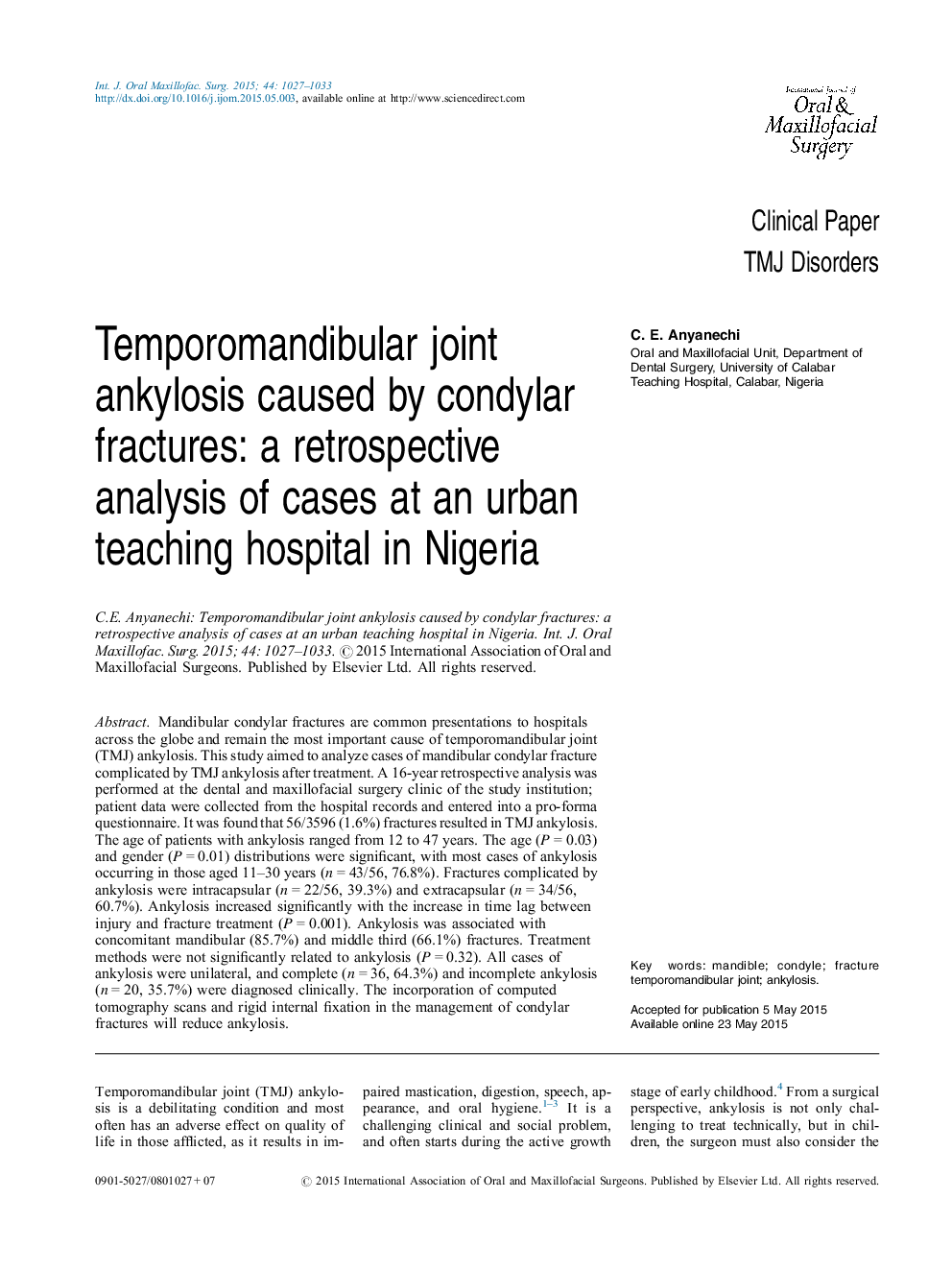| Article ID | Journal | Published Year | Pages | File Type |
|---|---|---|---|---|
| 3132273 | International Journal of Oral and Maxillofacial Surgery | 2015 | 7 Pages |
Mandibular condylar fractures are common presentations to hospitals across the globe and remain the most important cause of temporomandibular joint (TMJ) ankylosis. This study aimed to analyze cases of mandibular condylar fracture complicated by TMJ ankylosis after treatment. A 16-year retrospective analysis was performed at the dental and maxillofacial surgery clinic of the study institution; patient data were collected from the hospital records and entered into a pro-forma questionnaire. It was found that 56/3596 (1.6%) fractures resulted in TMJ ankylosis. The age of patients with ankylosis ranged from 12 to 47 years. The age (P = 0.03) and gender (P = 0.01) distributions were significant, with most cases of ankylosis occurring in those aged 11–30 years (n = 43/56, 76.8%). Fractures complicated by ankylosis were intracapsular (n = 22/56, 39.3%) and extracapsular (n = 34/56, 60.7%). Ankylosis increased significantly with the increase in time lag between injury and fracture treatment (P = 0.001). Ankylosis was associated with concomitant mandibular (85.7%) and middle third (66.1%) fractures. Treatment methods were not significantly related to ankylosis (P = 0.32). All cases of ankylosis were unilateral, and complete (n = 36, 64.3%) and incomplete ankylosis (n = 20, 35.7%) were diagnosed clinically. The incorporation of computed tomography scans and rigid internal fixation in the management of condylar fractures will reduce ankylosis.
